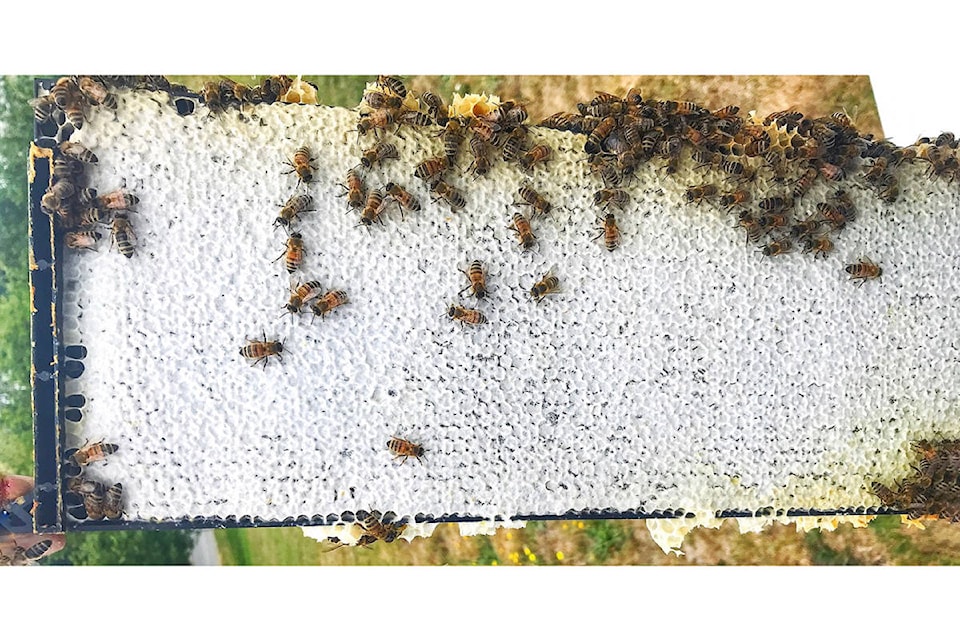The signs that summer is coming to an end are in full force. The days are a little shorter, the air is a bit chillier, and the flowers are becoming few and far between.
With the warning signs of fall, we can start preparing our busy beehives for the gloomy weather to come, which means it is time to extract that excess honey. However, the question needs to be asked, what qualifies as excess and how much do we leave for our wintering colonies?
Honeybees, as you may have noticed in your gardens, are very hard workers. They fly from flower to flower tirelessly collecting pollen and nectar. As mentioned in a previous article, honey is the product of nectar. Honeybees will continuously collect nectar as long as they have the space to store it in their hive, a strong workforce to forage and if nectar-producing flowers are in abundance. So honey production could be quite significant.
But how do you know if you have enough of the honey to extract for yourself?
The answer may vary depending on your geographic location. Here in the Comox Valley, you want to ensure you leave approximately 40-50 pounds of honey per box in your hive for winter. That works out to be around five deep frames of capped honey. I would suggest keeping a few extra frames of honey in your storage as a safety net and anything in excess of that, you can extract!
A common mistake is removing the ‘honey super’ or the box above the queen excluder, and extracting the frames prior to inspecting the rest of the hive. This is a mistake because your brood box (the bottom box with all the babies) may not have produced those five frames of honey needed for winter. You want to ensure you do a thorough inspection prior to extraction. Remember, the honey frames you leave for your colony are used to feed the honeybees from winter all the way until first bloom. If extra winter help is needed you can supplement feed with fondant or granulated sugar recipes.
A helpful tip would be removing honey frames from your hive in the early morning or later in the evening when robbing (when neighboring hives steal each other’s food stores) is less likely to occur and you encounter less bee traffic from foraging workers. Having a bee brush on hand is helpful, or placing a bee escape in between your ‘wintering’ boxes and the excess honey could make this experience less invasive and seamless. In addition, ensure your honey extraction occurs inside as the sweet smell of honey will attract neighboring pollinators to your whereabouts!
For more tips on honey extraction, email info@homegrownbee.ca
Rachel Halliwell is a Bee Master Certified beekeeper in the Comox Valley. Her website is www.homegrownbee.ca
